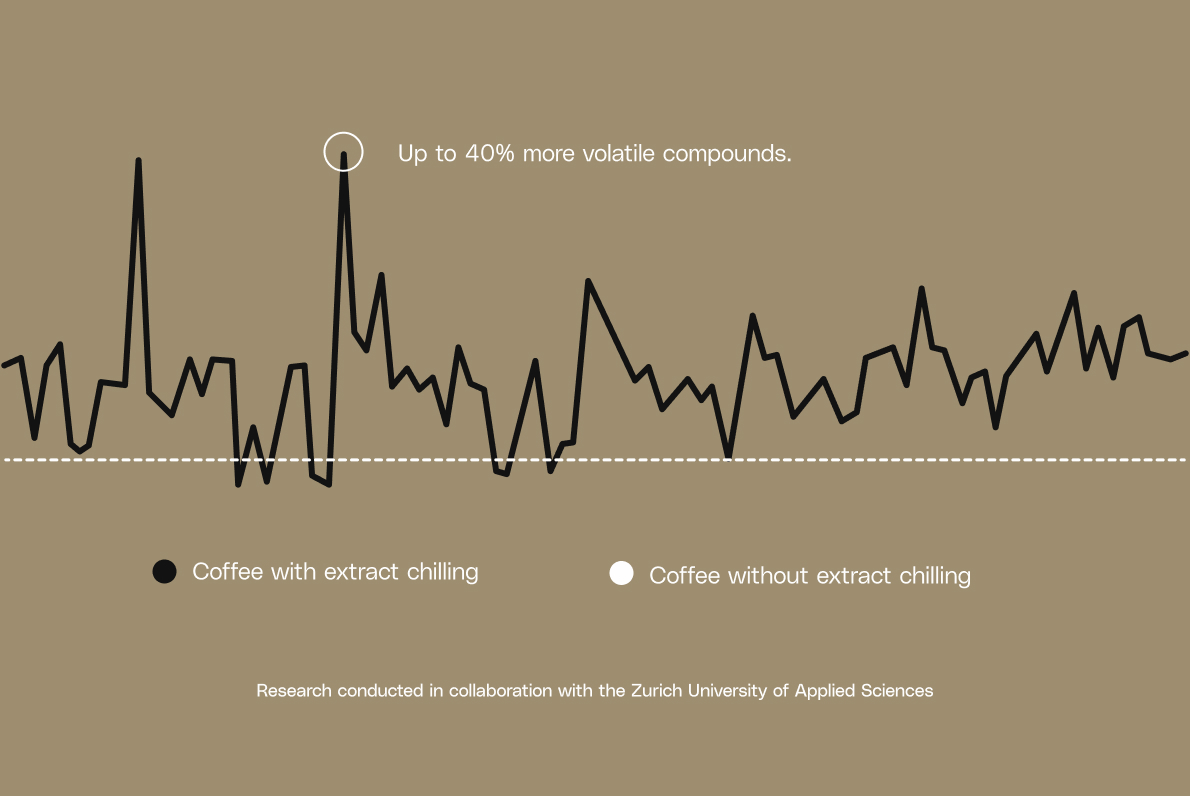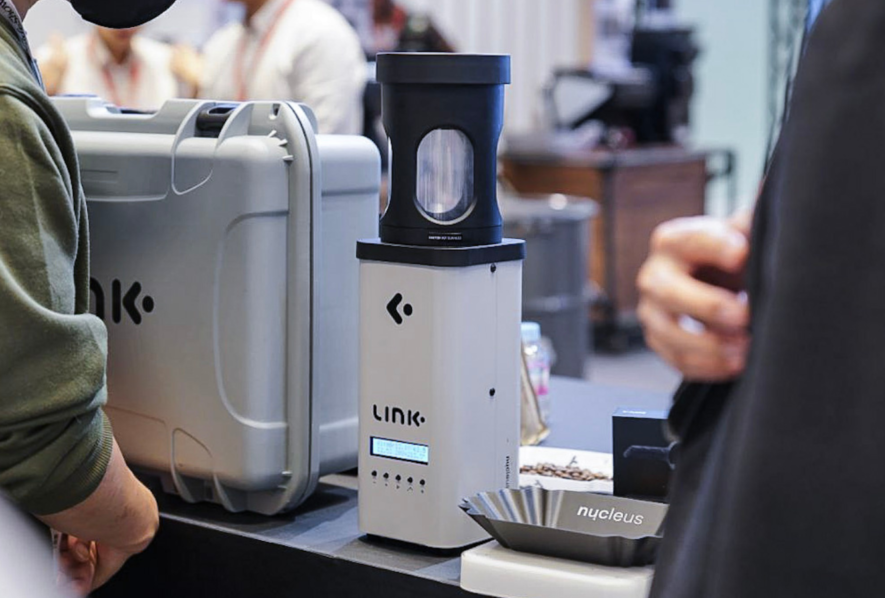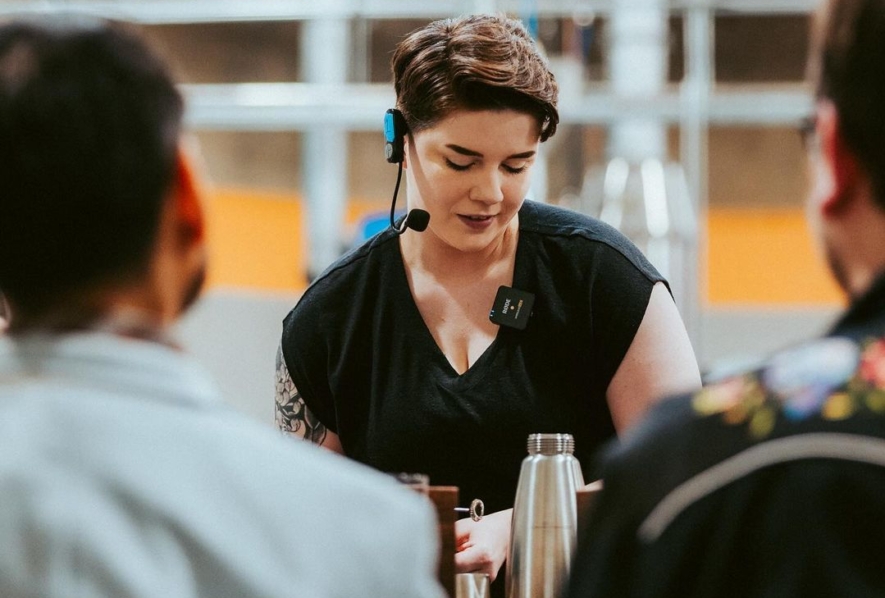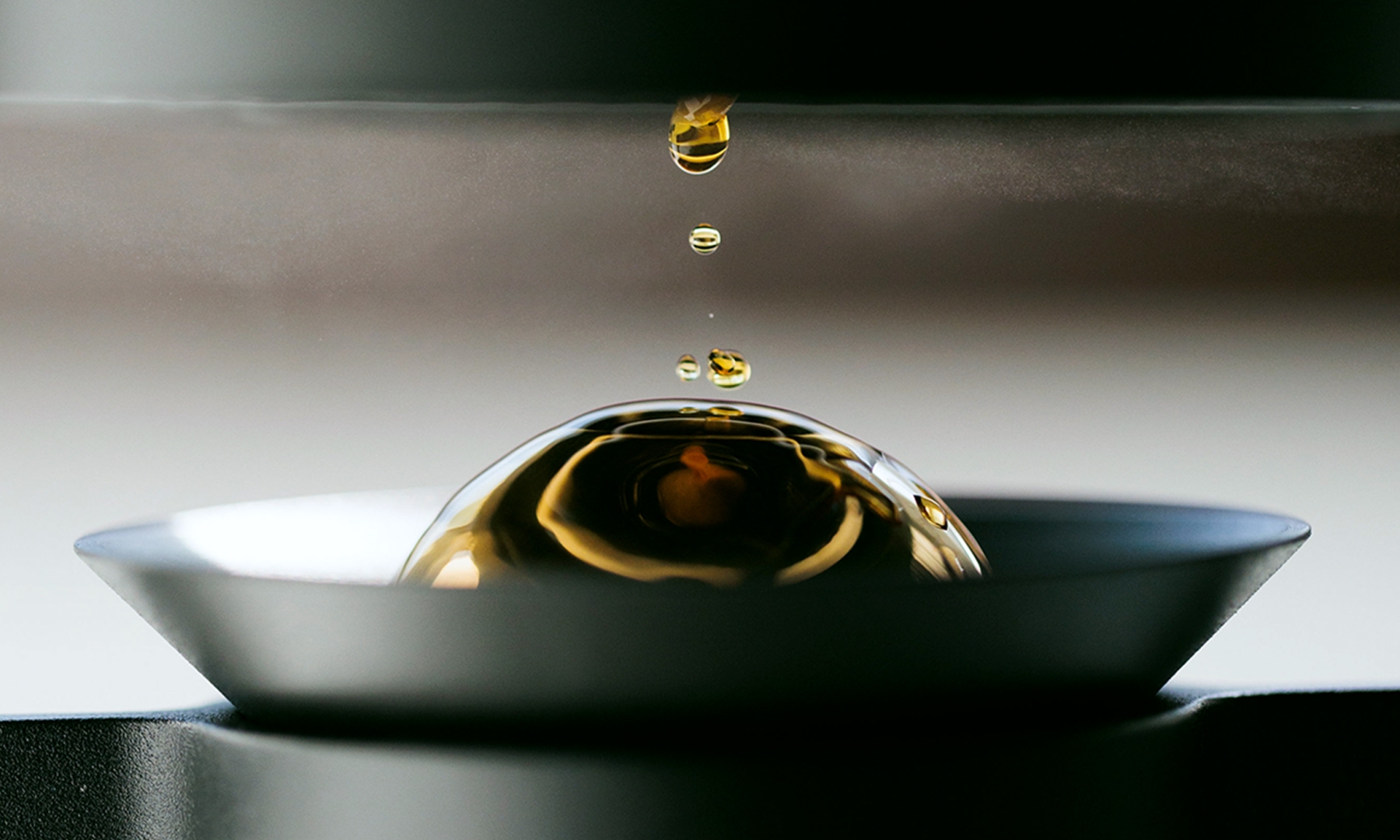Paragon is a new innovative technique, it’s goal is to optimise the quality of your coffee.
To get the best out of your Paragon, it helps to understand two topics, Volatile Compounds and Extract Chilling. This article explores both, and gives guidance on dialing in and getting started with your Paragon.
Volatile Compounds
When we smell and taste a cup of coffee, the majority of the experience comes from aromatic compounds known as Volatile Organic Compounds (VOC’s).
These compounds interact with our Olfactory (smell), Gustatory (taste), and Somatosensory (tactile) receptors.
This beautiful interaction between these compounds and our sensory receptors allows us to experience flavour.
What does this mean? VOC’s are extremely important. Understanding more about them, as individuals and as an entire industry, will only help us better understand the complex behaviors of coffee preparation and taste.
Volatile Compounds Escaping
When we brew coffee, the room smells nice, and the air is filled with aromatics coming from the coffee. But this is not ideal! The air smells nice because, VOC’s are escaping from the coffee. This escape happens when hot coffee travels through the cold air. The difference in temperature causes evaporation and volatile compounds to leave the coffee extract.
Instead of letting these escape, it’s possible to retain these aromatic compounds in your brew.
Extract-Chilling Technique
Professor Chahan from Zurich University of Applied Science (ZHAW) explained this to Sasa Sestic in 2018. Not knowing at the time, this conversation was so unique and would lead to amazing discoveries. Chahan also explained the phenomenon known as Extract-Chilling. In chilling the coffee liquid/extract immediately after the extraction creates less temperature difference between the hot coffee and the cold air. This creates the potential to retain more VOC’s within the beverage.
This knowledge made Sasa very excited. The idea is that we have not tasted the full potential of each coffee. So much hard work goes into each coffee, from the farm level all the way to the end beverage. Instead of letting some of this hard work escape into the atmosphere, tasting them will allow us to get more value out of each coffee.
Extract Chilling is a technique developed in collaboration with the Zurich University of Applied Science (ZHAW) and Nucleus Coffee Tools (NCT). Paragon is our solution to create an efficient device, allowing us to apply these benefits of Extract Chilling into single-serve filter brewing.
What is the Paragon?
Paragon has two parts, the stand and the Chilling Rock. The stand holds your favourite brew cone on top and a carafe at the bottom. Each level is adjustable, allowing you to incorporate your preferred equipment. The middle of the stand is where the magic happens. The Chilling Rock sits in the middle of the stand, directly underneath your brew cone, above your carafe. When you brew your coffee, you allow a portion of the extract to fall over this rock.
The Paragon is designed to sit on your scale allowing you to keep the same movements during your workflow. Whether in a cafe or at home, you don’t need to change your brew recipe, all you need is to incorporate the Chilling Rock. Think of Paragon as a ‘post extraction’ technique. We don’t want to change the extraction, instead, we are applying a new method post/after the extraction.
The Chilling Rocks should be kept in the freezer until ready to use. The Chilling Rocks height can be adjusted to be very close to the exit point of the coffee liquid under the brew cone. The greater the distance between the exit point and the Chilling Rock, the greater loss of VOC’s. We recommend a <5mm gap.
- Set up your chilling rock under the cone before you begin the brew, allowing you to capture the extraction from the start.
- At a certain point during the brew, remove the chilling rock by sliding the holder away from the extract.
- Continue your brew as normal, with the chilling rock aside, allowing the extract to fall into the carafe as normal.
Paragon Fundamentals
When brewing with Paragon, there are three main fundamentals you need to control.
The first two of these are mentioned above Temperature of the Chill Rock and the Distance of the Chill Rock. Follow the above recommendations and there is no need to alter these 2 for different coffees.
The third fundamental is the Duration of the Extract chilled. It simply is not a ‘copy and paste’ type method. The duration or amount of extract you run over the Chilling Rock will change the taste outcome. As different coffees behave differently, in order to get the best result, certain coffees will taste best at different durations.
How much of the extract should you chill?
We do not recommend chilling the whole extract. Unfortunatley, not all VOC’s taste positive. The majority of positive-tasting volatiles dissolve within the first portion of the extraction. Your ideal window likely will be the first 0-50% of the extract.
Dialing in your duration
The fun part! There is no one ‘perfect duration’ to suit all coffees. We recommend exploring your coffee and basing your decisions on your taste preference.
A simple exercise here is using the same coffee, brewing three brews, each with the same brew recipe, and only change the duration of the extract chilled.
We’ve noticed the best result for most coffees is when we chill the first 20-40% of the extract. So if your brew involves five even pours of water, chilling the first pour only, or the first two pours only, will be approximately 20% and 40%.
Evaluate not only the aroma, but importantly the taste experience from hot to cold (this is our favourite part). It’s mind-blowing how different they will taste. You can also try less or more duration, and compare with no extract chilling to give you a deeper understanding of how this method changes the taste.
Most common taste differences relate to flavour and structure. Since we are retaining more compounds, some flavours will be more intense and transparent. Some coffees will also show flavours you could not taste before. These ‘new flavours’ aren’t new, rather, they’ve been hiding in the potential of the coffee all along and have been unlocked. The way our taste perception works, is we can only perceive flavours if the compounds relating to that flavour are above a certain threshold. Anything below the threshold, can’t be perceived. When we extract chill, the level of some compounds will increase more than others. Some compounds that were below the threshold, are now above the threshold so we can now therefore taste them. Most flavour notes are results of a combination of multiple compounds. This new combination may also alter a flavour, for example evolving it from under-ripe raspberry to a more confectionary and sweet raspberry.
This is incredibly exciting as we can experience more of the DNA and personality of our favourite coffees. Experience more flavours that began from the soil, tree, or processing, flavours that were always there just hiding, but now we can appreciate even more.
We’ve conducted many chemical analysis experiments at ZHAW, whereby some compounds increased by up to 40% or more. They also found compounds never yet measured in coffee before.**
The structure also changes. A smoother, fuller texture is typically experienced with a sweeter, cleaner and rounder aftertaste.
We’ve started to notice some patterns. Washed coffees we typically find suit a duration of 20-30%, while natural and more process-influenced coffees suit 30-40% duration.
We’ve also had some amazing results with a Liberica lot at 50%. This beautiful Liberica from Malaysia had intense tropical fruits and sweet caramels. However it also had some less desirable savoury and umami notes when brewed traditionally. The more we chilled, the cleaner the coffee tasted and at 50% duration chilled, we softened the savoury and umami notes, allowing full appreciation of the unique tropical fruits and sweet smooth body of this species.
Will it make every coffee taste better?
Short answer No! As mentioned, not all VOC’s taste positive. When we use extract-chilling techniques, we unlock a coffees full potential. So, if your coffee has some undesirable characteristics, you may zoom in and highlight more of those. Poor examples such as, we’ve noticed very dark roasts, past-crop green beans/woody coffees. High levels of co2 as coffee de-gasses typically add a negative taste. So extract chilling in a not desirable age window for that coffee can make those de-gassing tastes more intense.
It’s important to note that Volatile Compounds come in different types. Think of these like contrasting families of compounds. Different steps like farm conditions, processing methods, fermentation, roast colour, grind, and extraction approach produce different families of compounds. Not only do some taste positive or negative, but different compounds also behave differently.
This is why we have our recommendations, but we also recommend you to explore it yourself. You may be using a different roast profile, different brew methods, and coffees with unique processes and farming methods. Dialing in your duration will allow you to notice patterns in your coffee.
With this in mind, we are so excited to present the Paragon! A solution we’ve innovated here at Nucleus Coffee Tools. Enabling you to easily incorporate this innovative technique, to maximise your daily coffee’s quality.
Our testing for this started in 2019, and everyday we continue to learn more. We are continuing to build our own taste and chemical analysis data. We can’t wait to share more as we continue to discover. We’ve experienced new tastes and unlocked potential from different coffees and there is still more for us to learn.
We look forward to hearing from coffee professionals and coffee lovers globally, to hear what you experience. Whether it’s with a certain brewing style, varietal, or species, we look forward to hearing different preferences and retaining more volatiles all across the world.

**We will publish official scientific papers sharing this, plus many more results, as we finalise more chemical analysis of sensory data with ZHAW and Nucleus Coffee Tools*

LINK announced as official sample roaster of the World Coffee Roasting Championships
Paragon is a new innovative technique, it’s goal is to optimise the quality of your coffee.
To get the best out of your Paragon, it helps to understand two topics, Volatile Compounds and Extract Chilling. This article explores both, and gives guidance on dialing in and getting started with your Paragon.

Behind the roast: World Brewers Cup Champion, Martin Woelfl
Paragon is a new innovative technique, it’s goal is to optimise the quality of your coffee.
To get the best out of your Paragon, it helps to understand two topics, Volatile Compounds and Extract Chilling. This article explores both, and gives guidance on dialing in and getting started with your Paragon.

Competitor stories: Morgan Eckroth
Paragon is a new innovative technique, it’s goal is to optimise the quality of your coffee.
To get the best out of your Paragon, it helps to understand two topics, Volatile Compounds and Extract Chilling. This article explores both, and gives guidance on dialing in and getting started with your Paragon.


